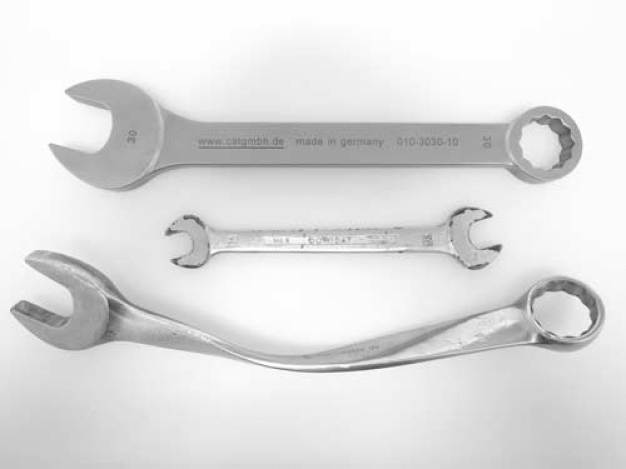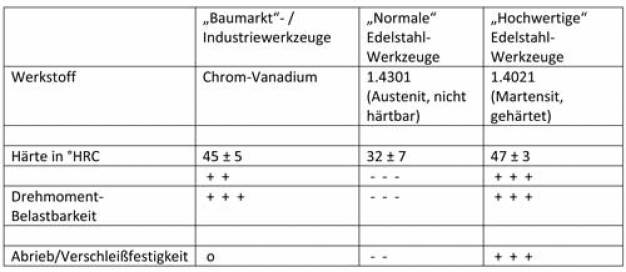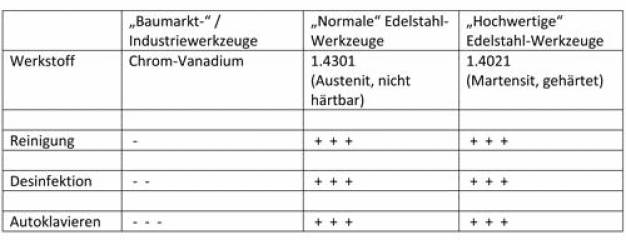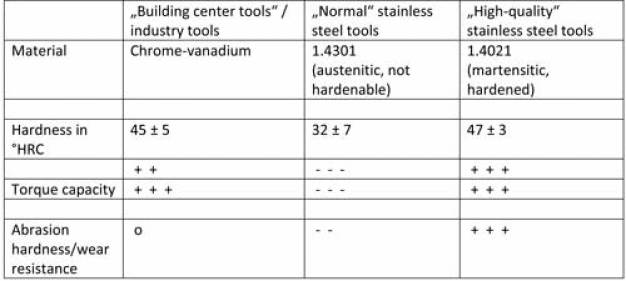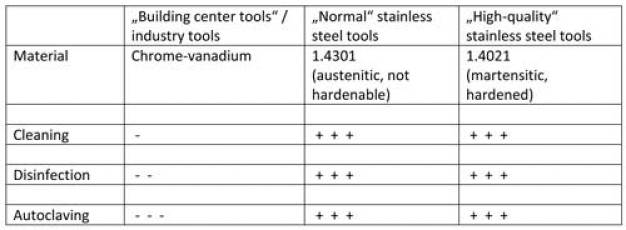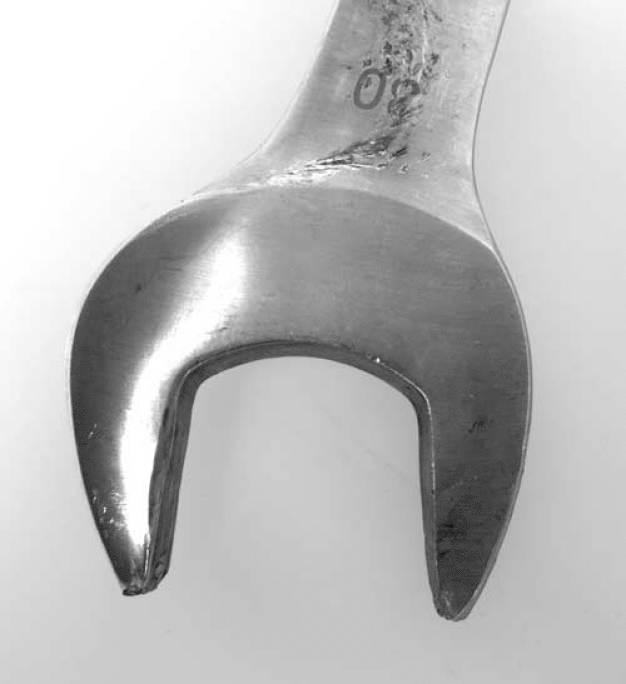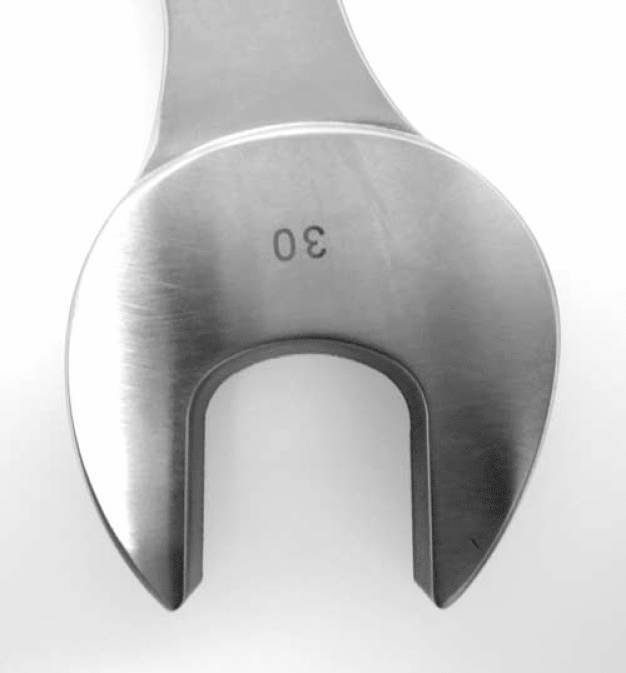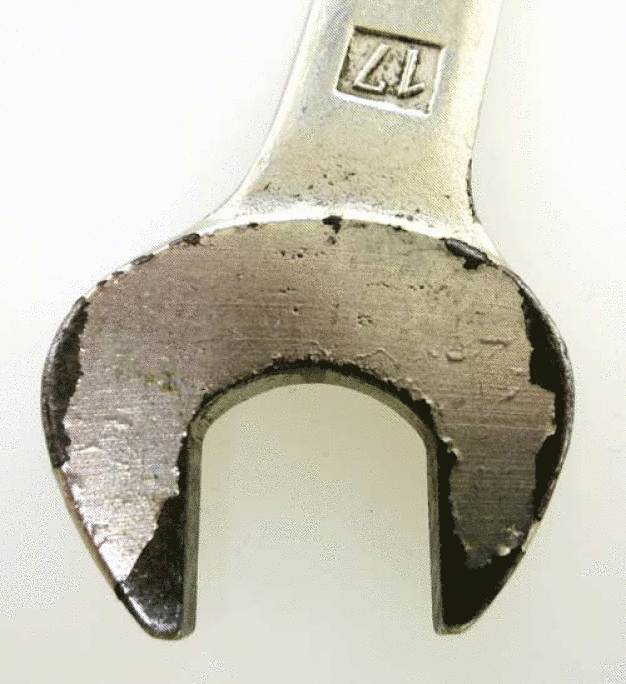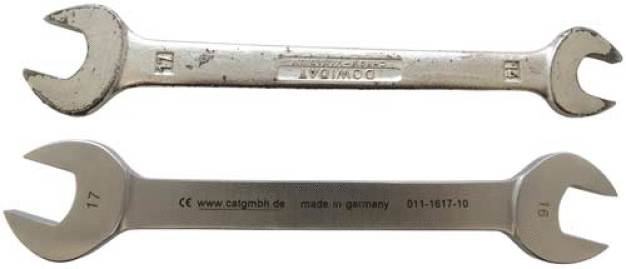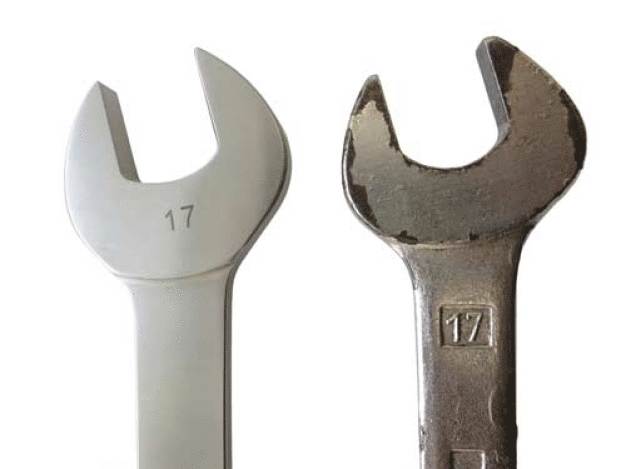- Planung
Matthias Gaul
Edelstahl oder Chrom-Vanadium?
Werkstoffe im Vergleich: In Reinräumen eingesetzte Werkzeuge müssen nicht nur mechanischen Belastungen standhalten, sondern auch ein Höchstmaß an Sicherheit im Hinblick auf Sterilität und Keimfreiheit respektive Produktrisiken bieten. Und in diesem Punkt gibt es zwischen Edelstahl und Chrom-Vanadium markante Unterschiede.
Die Erfahrung zeigt es immer wieder aufs Neue: In Sachen Werkzeuge arbeiten nach wie vor viele Unternehmen der Pharma- und der Lebensmittelindustrie selbst in Reinräumen oder hygienisch sensiblen Bereichen mit Chrom-Vanadium-Legierungen, ein weitaus kleinerer Teil dagegen mit Edelstahl-Werkzeugen. Aber spielt das überhaupt eine Rolle? Sind die Werkstoffe so verschieden? Klare Antwort: ja. So zum Beispiel in Bezug auf die Werkzeughärte und damit zusammenhängend der Drehmomentbelastbarkeit sowie der Abrieb- und Verschleißfestigkeit. Vor dem Hintergrund des Produktschutzes sowie der Desinfizier- und Sterilisierbarkeit differieren Chrom-Vanadium und Edelstahl außerdem hinsichtlich ihrer thermischen Belastbarkeit, der Korrosion und der Widerstandsfähigkeit gegen mechanischen Stress.
„Dabei bestehen freilich nicht nur Unterschiede zwischen Chrom-Vanadium- und Edelstahl-Legierungen, sondern auch innerhalb der Klasse der Edelstähle“, sagt Steffen Hild, Geschäftsführer der auf Reinräume spezialisierten CAT Clean Air Technology GmbH in Stuttgart. Bei Edelstahl beziehungsweise nichtrostendem Stahl, so die eigentlich korrekte Terminologie, gebe es fünf Legierungsstrukturen, die wiederum von den Bestandteilen des Stahls wie Chrom, Kohlenstoff, Nickel und Molybdän abhängen:
- austenitischer nichtrostender Stahl,
- martensitischer nichtrostender Stahl,
- ferritischer nichtrostender Stahl,
- nichtrostender Duplexstahl sowie
- ausscheidungshärtender nichtrostender Stahl.
Der nachfolgende Vergleich beschränkt sich neben Chrom-Vanadium auf die Martensite und die Austenite. Neben ähnlichen Legierungsbestandteilen, wie sie bei Austeniten gegeben sind, haben Martensite eine hervorragende Eigenschaft, die sie als Werkstoff für Werkzeuge geradezu prädestiniert: Man kann sie thermisch härten, was bei Austeniten nicht der Fall ist.
Härte des Stahls
Die Härte eines Werkzeugs ist aus zwei Gründen relevant. So zum Beispiel im Hinblick darauf, was ein Werkzeug leisten soll. In den meisten Fällen hat es die Aufgabe, ein Drehmoment beziehungsweise eine Kraft auf ein anderes Bauteil zu übertragen. Verformt sich dabei das Werkzeug, weil es den erforderlichen Kräften nicht standhält, kann es noch während des Einsatzes entsorgt werden – so zum Beispiel häufig genutzte Werkzeuge wie Gabel-Ring-Schlüssel oder Schraubendreher. Wichtig ist darüber hinaus auch die Abrieb- und Verschleißfestigkeit. Denn in einer kritischen Produktionsumgebung sollten keine abgeriebenen Metallpartikel entstehen oder gar mit dem Endprodukt in Kontakt kommen. Dies ist vor allem im Pharma- sowie im Lebensmittelbereich, aber auch in der Mikroelektronik essenziell – und zwar unter Qualitätssicherungsaspekten sowie in Bezug auf die Prozess-Risikoanalyse (siehe Tabelle 1).
Reinigung, Desinfektion und Sterilisierung
Die industrielle Anforderung an die Reinigung der Werkzeuge ist mindestens eine Sauberkeit auf Basis des optischen Eindrucks. Verunreinigungen und Anhaftungen auf der Oberfläche müssen vor dem Hintergrund des Produktschutzes entfernt werden. Bei höheren mikrobiologischen Anforderungen wie im Lebensmittel- sowie dem Pharmabereich kommt man um die Desinfektion und Sterilisierung der Werkzeuge nicht herum (siehe Tabelle 2).
Korrosion und Autoklavierung
Was bei Chrom-Vanadium-Werkzeugen zur Korrosion führt, ist eine elektro-chemische Reaktion beziehungsweise eine Flüssigkeit, die als Ionentauscher fungiert. Die oberste Schicht des Werkstoffs hat einen mäßigen Korrosionsschutz, solange diese unbeschädigt ist. Aber bereits die mechanische Belastung der Werkzeuge führt zu Mikrorissen in der Oberfläche, die dann schnell korrodieren kann. Im weiteren Verlauf kommt es auch häufig vor, dass die Oberfläche zumindest partiell abplatzt. Die Desinfektion mit aggressiveren Medien begünstigt zusätzlich den Prozess der Korrosion, da die gängigen Medien ein „besserer“ Ionentauscher sind.
Nichtrostende Stahlsorten wie Martensite und Austenite sind hier aufgrund der immanenten Passivschicht des Werkstoffs im Vorteil, da diese Schicht das Material wie eine sich regenerierende Schutzhülle umgibt. Ähnlich wie beim Aluminium ist dieser Schutz eine Oxidschicht, genauer gesagt eine Chrom-Oxid-Schicht. Wird die Schutzschicht verletzt, oxidiert das darunterliegende Material mit Sauerstoff und bildet diese neu aus. Die Passivschicht ist verhältnismäßig reaktionsträge und bildet so einen wirksamen Schutz vor Korrosion.
Betrachtet man abschließend noch den Prozess des Autoklavierens, kommt ein weiterer Nachteil von Chrom-Vanadium zum Tragen. Denn dieses Material hält lediglich Temperaturen von knapp unter 100 Grad Celsius aus. Bei höheren Temperaturen platzt dagegen die Oberfläche des Materials ab, was dann unweigerlich zur Korrosion führt.
Fazit
Produktschutz und Lebensdauer von Reinraumwerkzeugen hängen stark vom gewählten Material ab. Der jeweilige Werkstoff muss zwar vor allem die mechanischen Anforderungen an ein Werkzeug erfüllen, in produktionskritischer Umgebung sind aber auch die Sauberkeits- und Hygieneanforderungen von entscheidender Bedeutung. „Da in Reinräumen eingesetzte Werkzeuge regelmäßig desinfiziert und sterilisiert werden müssen, sind somit für einen effektiven Produktschutz Werkzeuge aus martensitischen Stahlsorten gegenüber Austeniten und erst recht gegenüber Chrom-Vanadium zu bevorzugen“, lautet deshalb die Empfehlung von CAT-Geschäftsführer Steffen Hild.
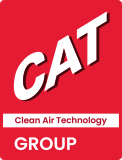
CAT Clean Air Technology GmbH
Motorstraße 51
70499 Stuttgart
Deutschland
Telefon: +49 711 365919937
eMail: info@catgmbh.de
Internet: http://www.catgmbh.de





